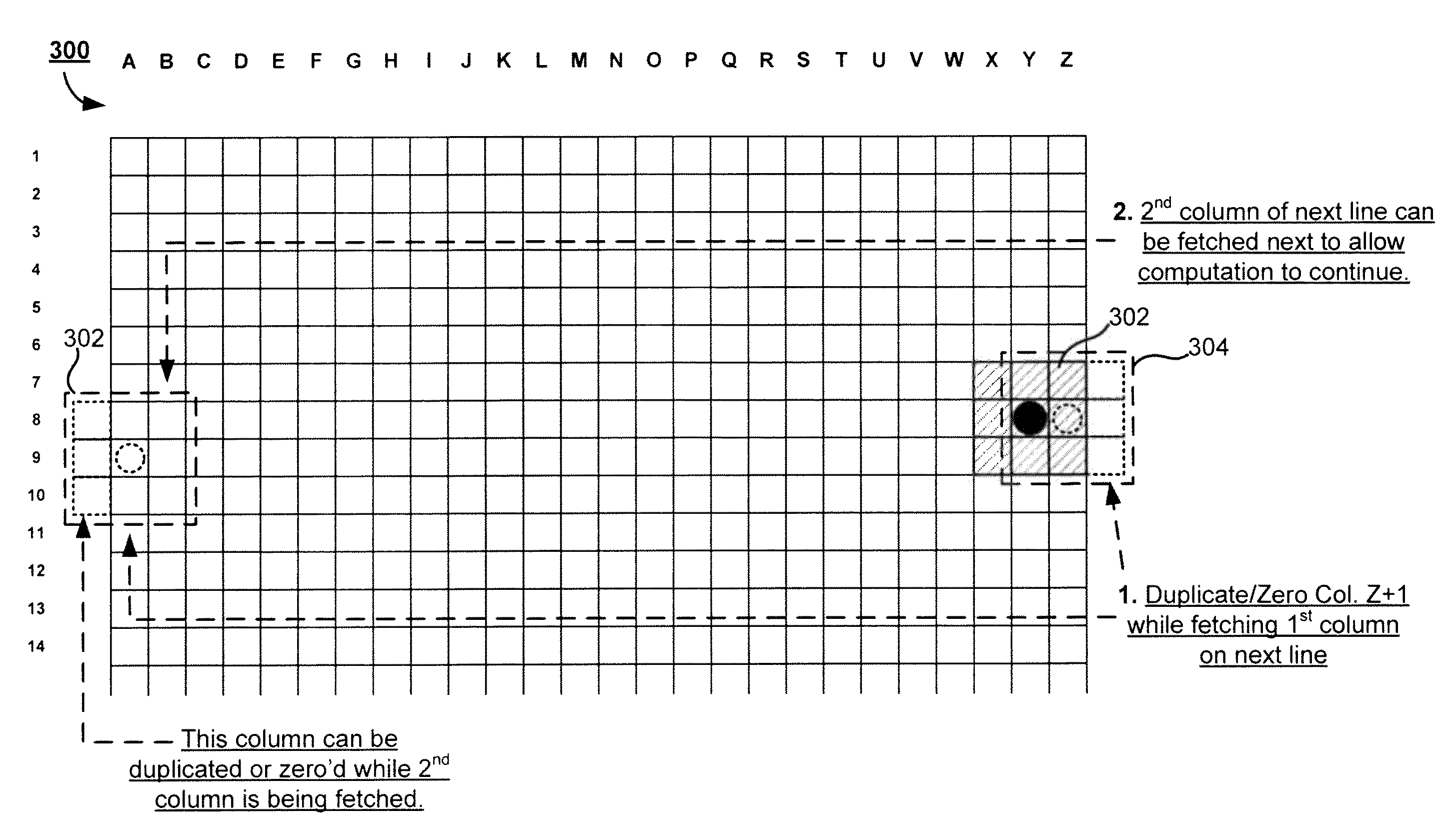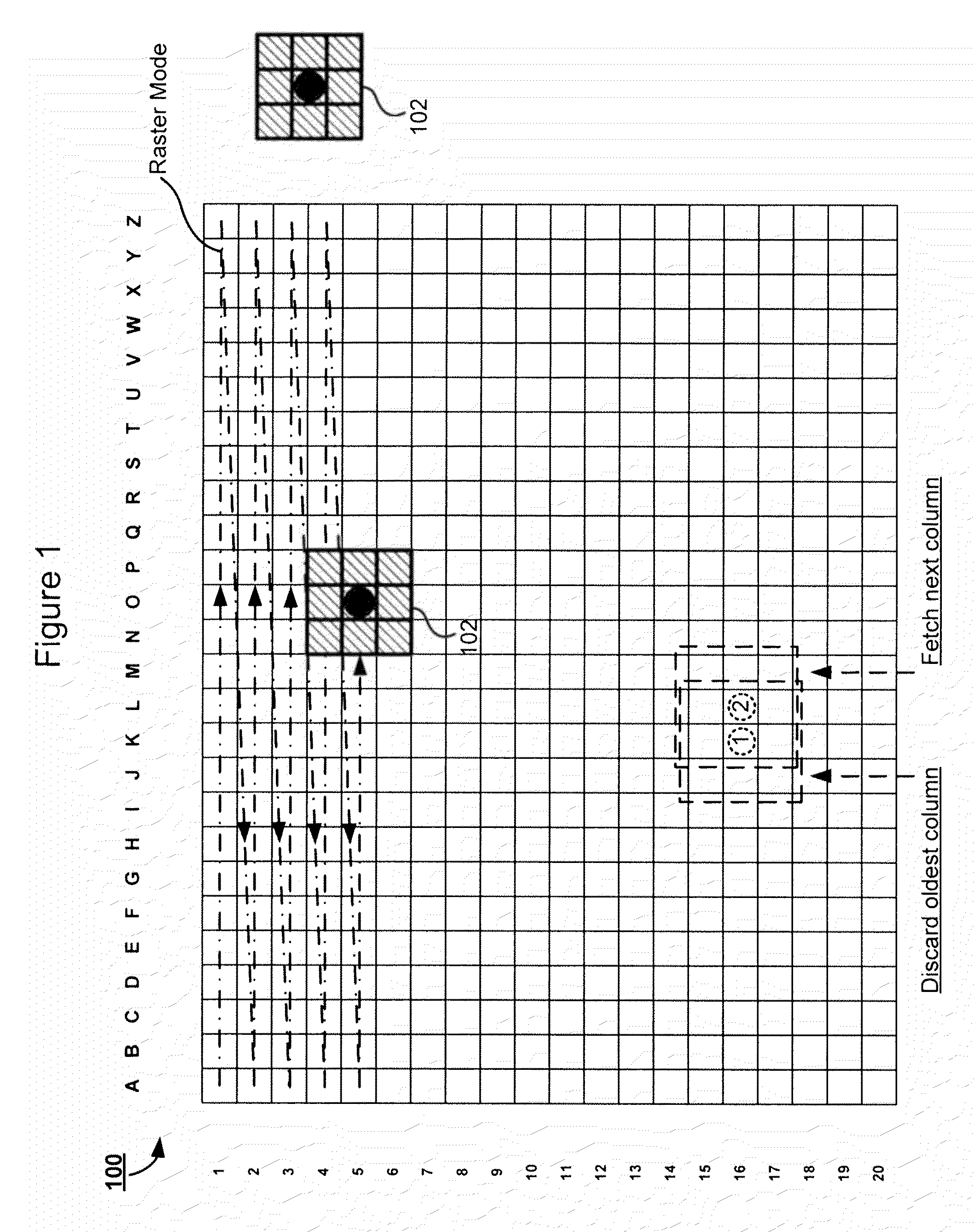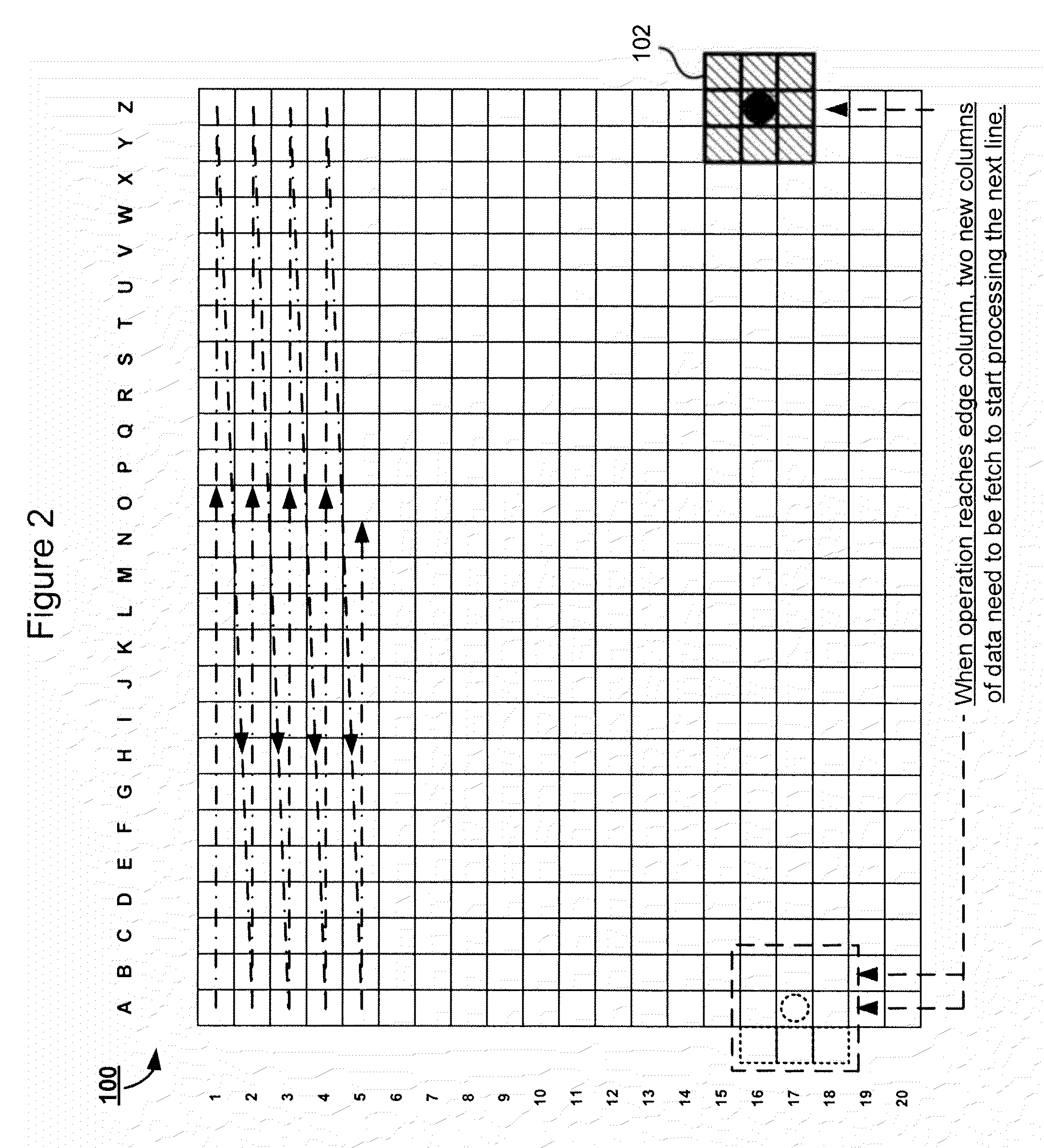Methods and apparatus for image processing at pixel rate
a technology of image processing and pixel rate, applied in the field of digital signal processing and computer graphics, can solve the problems of lack of efficiency and neither of these solutions are desirable, and achieve the effects of improving timing control, constant rate of memory fetches and pixel outputs
- Summary
- Abstract
- Description
- Claims
- Application Information
AI Technical Summary
Benefits of technology
Problems solved by technology
Method used
Image
Examples
Embodiment Construction
[0018]Embodiments of the present invention improve image processing and can maintain a one-to-one relationship between incoming pixel rate and outgoing pixel rate without additional clock cycles or memory bandwidth even when the processing operations transition to a new line or a new frame of pixels. An improved timing control according to the present invention takes advantage of idle memory bandwidth by pre-fetching a new column of pixel data in a first pixel block of a next line or frame while a new column of an edge pixel block on a current line is duplicated or zeroed out. As the edge pixel block(s) on the current line are processed, the data in the first pixel block of the next line or frame become ready for computation without extra clock cycles or extra memory bandwidth. More details, features, and advantages of the present invention can be appreciated with reference to the accompanying drawings and the detailed explanation below.
[0019]Referring to FIG. 3, there is illustrate...
PUM
 Login to View More
Login to View More Abstract
Description
Claims
Application Information
 Login to View More
Login to View More - R&D
- Intellectual Property
- Life Sciences
- Materials
- Tech Scout
- Unparalleled Data Quality
- Higher Quality Content
- 60% Fewer Hallucinations
Browse by: Latest US Patents, China's latest patents, Technical Efficacy Thesaurus, Application Domain, Technology Topic, Popular Technical Reports.
© 2025 PatSnap. All rights reserved.Legal|Privacy policy|Modern Slavery Act Transparency Statement|Sitemap|About US| Contact US: help@patsnap.com



